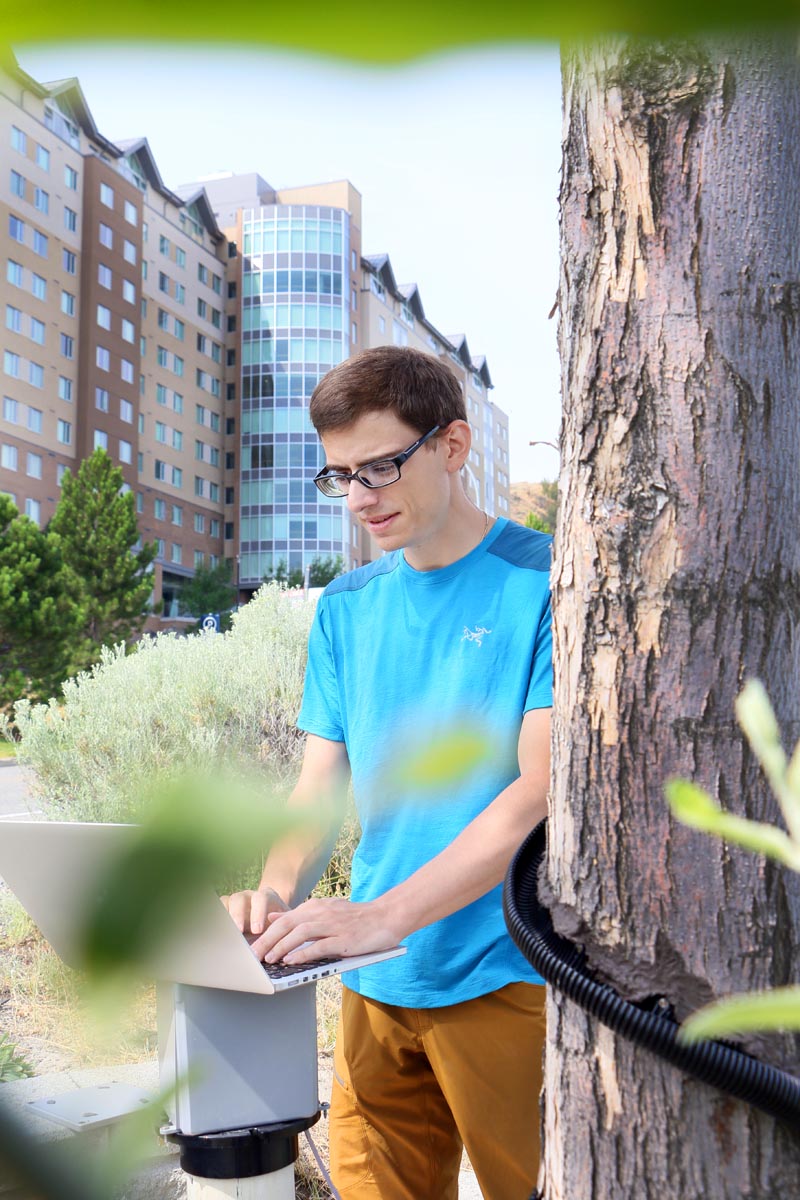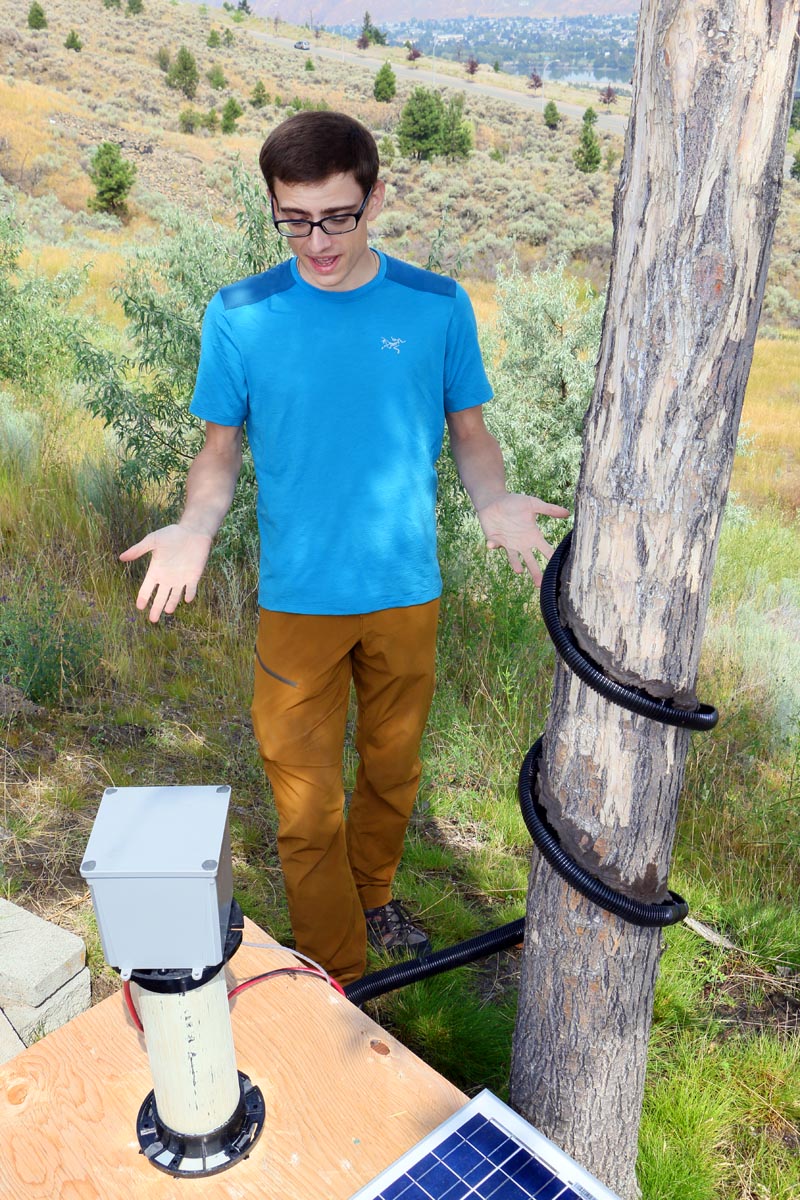When he was tinkering with low-cost technology last summer, Brandon Turner didn’t realize it would have a huge payoff a year later. Taking what he learned then and since, Turner has translated it into a paid research project through TRU’s UREAP program.

Brandon Turner reviews some of his data at one of his tree stations located behind the TRU Residence and Conference Centre along University Drive.
Using solar panels, Arduino microcontrollers and some other components, the fourth-year geography student has been collecting data to better understand the movement of rain water down tree trunks—otherwise known as stemflow. That kind of information is valuable to the likes of arborists, city planners, landscapers and even those involved in reforestation.
The project is being co-supervised by Geography and Environmental Studies faculty members David Hill and Darryl Carlyle-Moses. The data generated supports the ongoing forest hydrology research of Carlyle-Moses while the technology created demonstrates the potential of real-time monitoring of large-scale environmental processes, a research interest to Hill.
Turner’s study is called “Conducting hydrologic research with hobbyist electronics; gaining new insights into stemflow processes with low-cost custom sensor platforms”. He is one of 26 students doing a TRU UREAP this summer.
Making it easier
Rather than collecting water in containers and then manually measuring the water when someone has time, Turner’s setup allows water to be electronically measured and the information fed to a small storage device like a camera SD card. Or, the data could be sent directly to a server, and the information fed to a webpage where it could be viewed in real time. A more automated system removes a lot of the guess work, making the data more reliable.
Cutting equipment costs
Turner said what he has put together is about one-fifth the price of specially-manufactured equipment. The price tag for his equipment? About $400.

Turner explains his set up and the major pieces involved.
“The techniques used to monitor stemflow are still quite time and labour intensive and I saw an opportunity to apply new, inexpensive technologies to the field,” said Turner. “I thought the new technology could improve on the quality of the data and reduce the time necessary to retrieve it.”
Flattening the learning curve
The Arduino components are a big part of Turner’s project and are something of a revolution themselves. Sharing much in common with LEGO, it is a platform limited only by imagination. Geared toward those without programming/electronics backgrounds who still want to make things, pieces are stuck together to create different projects from simple switches to intricate robots. There is a large community supporting the platform, making it easy to find programming examples and instructions or inspiration for any project.
“Arduino components have made it easy to get involved in electronics because the learning curve is so low and it is all very straight forward. It’s easily explained, hides a lot more of the complex things and it’s not scary,” said Turner. “I’ve found it to be a great springboard into deeper electronic analysis and to a deeper understanding of how circuits work. Arduino encourages exploring and creativity that you wouldn’t get if you were given a pile of wires and integrated circuits.”
More undergraduate research opportunities

